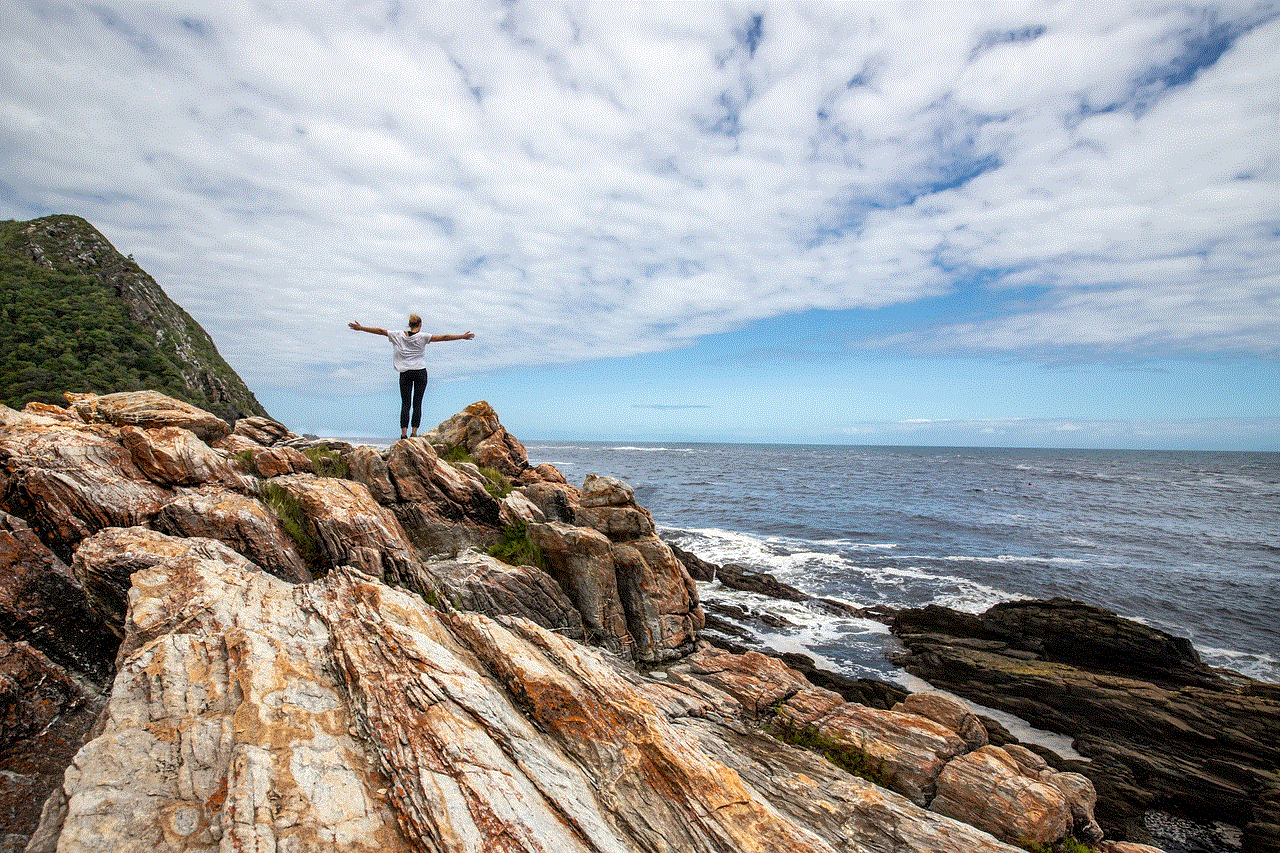why is 13 the age limit for social media
In today’s digital age, social media has become an integral part of our daily lives. From sharing our thoughts and opinions to connecting with friends and family, social media platforms provide us with a sense of community and belonging. However, with the increasing use of social media among younger generations, there has been a growing concern about the age limit for using these platforms. While some argue that the age limit of 13 is too low, others believe that it is appropriate. In this article, we will delve deeper into the reasons behind the age limit of 13 for social media and explore its impact on children and teenagers.
The age limit of 13 for social media was established by the Children’s Online Privacy Protection Act (COPPA) in 1998. This federal law was enacted to protect the online privacy of children under the age of 13. With the rise of the internet, there was a growing concern about the personal information of children being collected and used without their parents’ consent. COPPA requires websites and online services to obtain verifiable parental consent before collecting personal information from children under the age of 13.
Since social media platforms require users to create an account and share personal information, they fall under the purview of COPPA. This means that they must comply with the age limit of 13 and obtain verifiable parental consent before allowing children to use their services. Failure to do so can result in hefty fines and legal repercussions.
One of the main reasons behind the age limit of 13 for social media is to protect children’s online privacy. The internet is a vast and often unpredictable place, and children may not fully understand the consequences of sharing personal information online. By restricting their access to social media platforms, COPPA aims to prevent them from falling prey to online predators or being targeted for advertising purposes.
Moreover, children under the age of 13 may not have the cognitive ability to understand the potential risks associated with using social media. They may be more susceptible to cyberbullying, online harassment, and exposure to inappropriate content. By limiting their access to social media, COPPA aims to protect their mental and emotional well-being.
Another important aspect to consider is the impact of social media on a child’s development. The teenage years are a critical stage of development, and social media can have a significant impact on their self-esteem, social skills, and overall mental health. According to a study by the Royal Society for Public Health, young people who spend more than two hours a day on social media are more likely to report poor mental health, including anxiety and depression.
Furthermore, social media can also contribute to a distorted self-image and the pressure to conform to unrealistic standards of beauty and success. With the rise of influencers and the culture of comparison on social media, children and teenagers may feel inadequate and develop a negative self-image. By limiting their access to social media, COPPA aims to protect them from these negative impacts and promote a healthier self-perception.
However, despite the age limit of 13, many children and teenagers still manage to create social media accounts by lying about their age. This not only violates COPPA but also exposes them to the risks associated with using social media. Moreover, with the increasing use of smartphones and the internet, it has become challenging to monitor and regulate children’s online activities. Parents may not be aware of the apps and platforms their children are using, which can make it challenging to enforce the age limit of 13.
Additionally, there is a debate about whether the age limit of 13 is too low. Some argue that it should be increased to 16 or 18, as teenagers may not be emotionally mature enough to handle the potential risks of social media. Moreover, teenagers are at a vulnerable age where they may be seeking validation and acceptance from their peers, making them more susceptible to the negative influences of social media.
On the other hand, some argue that the age limit of 13 is appropriate, as it allows children to learn and navigate social media under parental supervision. It also gives them the opportunity to develop critical thinking skills and learn how to use social media responsibly. Additionally, many social media platforms have implemented safety features such as content filters and parental controls to ensure a safer online experience for children and teenagers.
Furthermore, social media can also have many positive impacts on children and teenagers. It allows them to connect with friends and family, explore their interests, and engage in meaningful conversations. It can also provide a platform for creative expression and learning opportunities. By limiting their access to social media, children may miss out on these positive aspects, and it may also hinder their social development.
In conclusion, the age limit of 13 for social media is based on the need to protect children’s online privacy and promote their well-being. While it may have its limitations and challenges, it serves as a crucial safeguard in today’s digital landscape. Parents also have a responsibility to educate their children about the potential risks of using social media and monitor their online activities. As technology continues to evolve, it is crucial to continuously re-evaluate the age limit for social media and ensure that children and teenagers are using these platforms safely and responsibly.
how to see restricted number
In today’s digital age, it is no surprise that we receive countless phone calls on a daily basis. Some of these calls are from family and friends, while others are from unknown or restricted numbers. While receiving calls from restricted numbers may not seem like a big deal, it can become a cause for concern for many individuals. The question of how to see restricted numbers has been a topic of interest for a long time, and in this article, we will delve deeper into this subject to provide you with a better understanding.
Before we dive into the methods of seeing restricted numbers, let’s first understand what exactly a restricted number is. A restricted number is a phone number that is not displayed on the recipient’s caller ID. This means that when you receive a call from a restricted number, the screen will only display “restricted” or “private number” instead of the actual phone number. This feature is generally used by individuals who wish to keep their identity private or by businesses that make mass calls to their customers.
Now that we have a basic understanding of restricted numbers, let’s explore the different ways in which you can see these numbers.
1. Call back the number
The most obvious and simplest way to see a restricted number is to call it back. Sometimes, the caller may have forgotten to disable the restricted feature, or it could be a genuine mistake. In such cases, you will be able to see the number displayed on your caller ID when you call back. However, this method may not always work, as the caller may have intentionally kept their number restricted.
2. Use *69
*69 is a code that allows you to call back the last number that called you. This feature is available in most countries and can be used to see restricted numbers. Simply dial *69 on your phone, and the last number that called you will be displayed on your screen. However, this method is not a foolproof way of seeing restricted numbers as the caller may have blocked their number from being revealed through this code.
3. Contact your service provider
If you receive frequent calls from restricted numbers, you can contact your service provider and request them to unblock these numbers. Most service providers have the option to unblock restricted numbers for their customers. However, this may come at an additional cost, and the unblocked numbers may still be displayed as “private” or “restricted” on your caller ID.
4. Use a reverse phone lookup service
A reverse phone lookup service is a database that contains information about millions of phone numbers, including restricted numbers. These services allow you to search for a phone number and retrieve information such as the owner’s name, address, and other contact details. While there are many free reverse phone lookup services available, they may not always provide accurate information. It is recommended to use a paid service for more reliable results.
5. Use a caller ID app



There are numerous caller ID apps available for both Android and iOS devices that can help you see restricted numbers. These apps use a vast database to identify incoming calls and display the caller’s information, including restricted numbers. Some popular caller ID apps are Truecaller, Hiya, and Whoscall.
6. Check your call logs
If you have received a call from a restricted number, you can check your call logs to see the number. This method may not always work, as the caller may have intentionally deleted their number from the call logs.
7. Use a trap call service
Trap call services are specifically designed to unmask restricted numbers. These services work by forwarding the call to a different number, which then reveals the original number of the caller. However, these services are not free, and you will have to pay a monthly or yearly subscription fee to use them.
8. Use a landline
If you have a landline phone, you can use a feature called “Anonymous Call Rejection” to block calls from restricted numbers. This feature allows you to reject calls from numbers that have their caller ID blocked. However, this feature may not be available in all countries, and you will have to check with your service provider to see if it is available.
9. Ask the caller to unblock their number
In some cases, the caller may have accidentally blocked their number from being displayed on your caller ID. If you know the person who called you, you can ask them to unblock their number, and they can do so by simply dialing a code or contacting their service provider.
10. Contact the authorities
If you are receiving harassing or threatening calls from a restricted number, you can report it to the authorities. They have the necessary tools and resources to track down the caller and reveal their identity.
In conclusion, there are several ways to see restricted numbers, but not all of them may work in every situation. It is essential to respect an individual’s privacy and only use these methods when necessary. If you are receiving unwanted calls from restricted numbers, it is best to block them or report them to the authorities. Remember to use these methods responsibly and always prioritize your safety and well-being.
bucket list family online negativity



The Bucket List Family: Overcoming Online Negativity with Love, Adventure, and Purpose
In a world where social media has become a dominant force in our daily lives, it’s no surprise that the phenomenon of online negativity has also risen. From cyberbullying to trolling, the internet can be a harsh and unforgiving place. And for those who choose to put their lives on display, such as the popular travel influencer family, The Bucket List Family, the scrutiny and criticism can be overwhelming.
The Bucket List Family, consisting of Garrett and Jessica Gee and their three young children, Dorothy, Manilla, and Calihan, rose to fame in 2015 when they decided to sell all their possessions and travel the world. Their adventures and experiences were shared on social media, gaining them a massive following of over 2 million on Instagram and 1.5 million on youtube -reviews”>YouTube . However, with fame also came a fair share of online negativity.
The Gee family has been the target of online hate and backlash, with some accusing them of exploiting their children for profit and others questioning the authenticity of their travels. In an interview with Good Morning America, Jessica Gee shared, “I don’t want the negativity to ever get to a point where it affects our family and our children. There are a lot of opinions out there, and we just try to stay true to ourselves and our family values.”
Despite the negativity, The Bucket List Family has chosen to focus on the positive impact they can make through their travels and experiences. They have used their platform to spread love, kindness, and positivity, inspiring others to follow their dreams and make a difference in the world.
One of the ways The Bucket List Family has overcome online negativity is by staying true to their values and purpose. Instead of succumbing to the pressure of conforming to what their followers want, they have stayed authentic and genuine in sharing their adventures. From helping build schools in developing countries to participating in clean-up efforts in polluted beaches, the family has used their travels to make a positive impact in the world.
Their purpose-driven mindset has also extended to their business ventures. The family has launched their own line of sustainable travel products, with a portion of the proceeds going towards charitable causes. They have also partnered with various organizations to raise awareness and funds for important issues, such as ocean conservation and children’s education.
Another way The Bucket List Family has tackled online negativity is by using their platform to spread love and kindness. Instead of engaging with haters, the family chooses to focus on the positive comments and messages they receive from their followers. They have also started a “Love List,” where they share messages of love and gratitude from their fans, creating a community of positivity and support.
The family has also used their social media presence to promote acts of kindness and inspire others to spread love in their own communities. From surprise visits to their followers’ homes to giving away free trips, The Bucket List Family has shown that there is still good in the world, and it’s worth sharing.
In addition to promoting positivity online, The Bucket List Family has also taken steps to protect their children from the negative aspects of social media. They have chosen to keep their children’s faces hidden in their posts and videos, only revealing their identities to a select few. This decision has allowed the children to maintain their privacy and innocence, shielded from the harsh world of social media.
Despite their efforts, The Bucket List Family has still faced their fair share of online negativity. However, instead of letting it bring them down, the family has used it as an opportunity to educate and spread awareness. In a recent Instagram post, Jessica Gee shared, “We are all human and we all have a choice. A choice to focus on the negative or a choice to focus on the positive. We choose love. And we are grateful for the opportunity to spread that love to the world.”
The family has also used their experiences with online negativity to teach their children about the importance of kindness and resilience. In a YouTube video titled “How to Handle Bullying,” the Gee children shared their own experiences with bullying and how they have learned to overcome it with love and positivity.
The Bucket List Family’s journey has not only inspired others to travel and make a positive impact but also to overcome online negativity with love and purpose. By staying true to themselves, promoting kindness and positivity, and educating others, the family has shown that the power of love can triumph over hate.



In conclusion, The Bucket List Family has faced their fair share of online negativity, but they have not let it defeat them. Instead, they have used their platform to spread love, make a positive impact, and inspire others to do the same. In a world where online negativity seems to be the norm, The Bucket List Family has shown that love, adventure, and purpose can be the ultimate weapons against hate.
